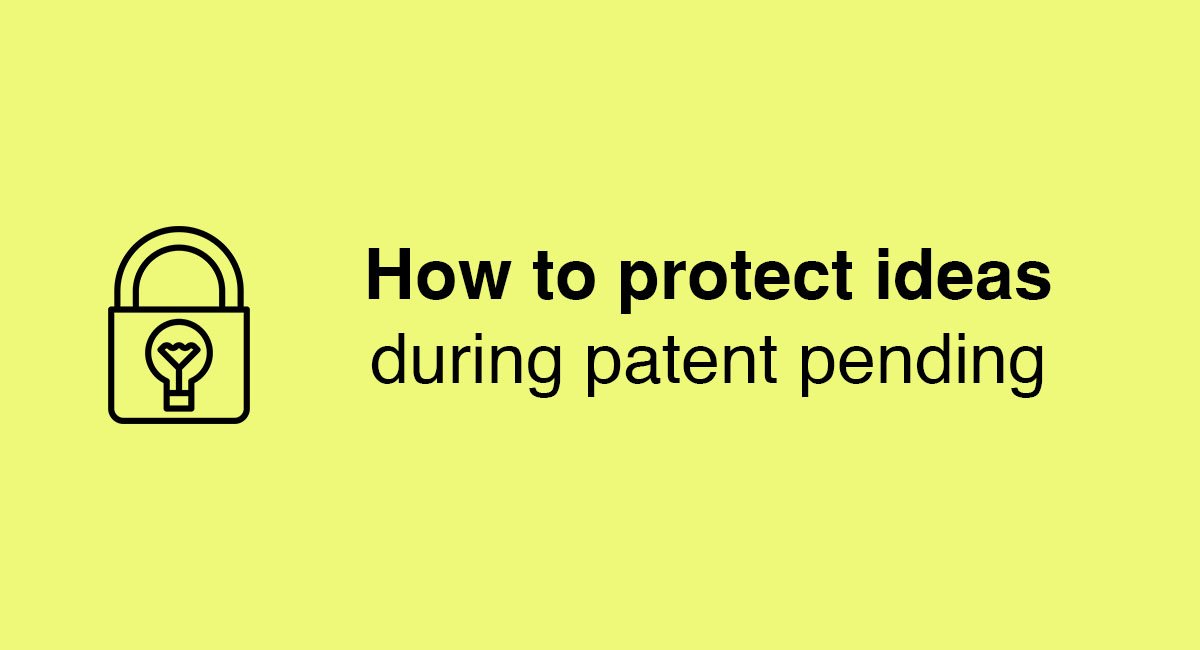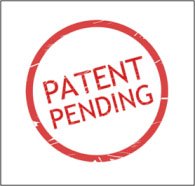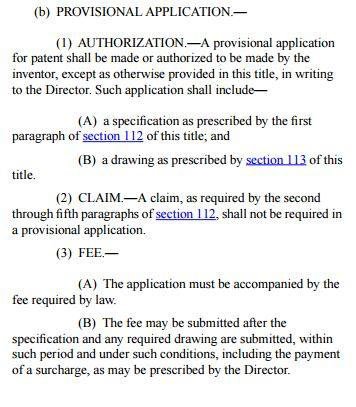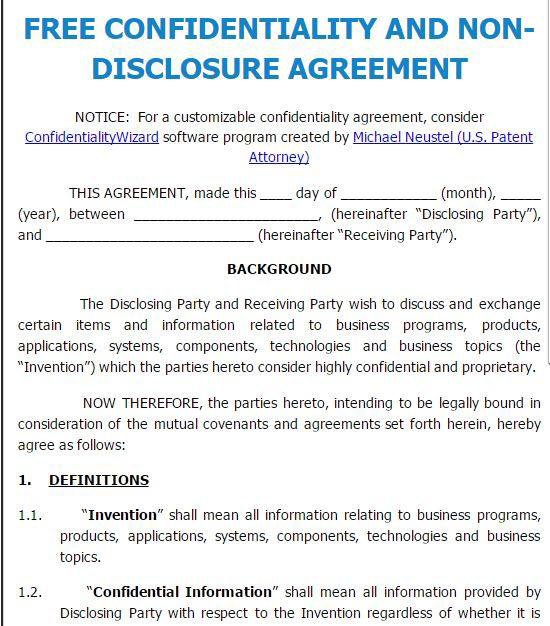How to protect ideas during patent pending

Crowdfunding websites like Kickstarter, Indiegogo and RocketHub have become extremely popular and successful in the last few years.
Entrepreneurs, makers and inventors that cannot or do not wish to go with a traditional funding route come to these websites to offer their product, creation or service to the world in exchange for funding.
Contents
Although launching your idea or prototype on Kickstarter is a great way to seek funding and test your idea in the marketplace, it comes with risks as well and one obvious one is intellectual property protection.
Normally, the better your project is described and supported, especially with pictures and design specs, the more likely you are to obtain successful funding. However, by putting your prototype or idea on a public website, you are also putting your idea at risk of being copied by others.
So how can you protect your ideas?
Patent protection
One of the most suitable ways to protect your idea is to apply for a patent.
![]()
A patent is a formal monopoly on your invention that excludes everyone else from being able to use, copy, license, sell or recreate your invention without your permission. If anyone violated your patent, you could apply for a court injunction to stop the other party from infringing on your patent and on top of this, make a claim for damages.
Be aware though that a patent doesn’t last as long as some other types of intellectual property rights (such as copyrights) and depending on the type of patent and the country you are in, you can roughly estimate a patent to last for about 20 years.
A patent only applies in the country in which it is registered so it’s important that you think globally when you are considering patent protection. Another downside that you should be aware of is that patents are generally very expensive.
There are two ways that you can go about applying for a patent:
- Nonprovisional patent
- Or a provisional patent
Nonprovisional patent
The nonprovisional patent route places you in the queue immediately for your invention to be examined.
It normally takes several years before your nonprovisional patent will be finally approved. Once approved and issued, your patent will be dated from the date of filing.
The process of applying for a nonprovisional patent requires you to provide detailed information including all the inventor’s names, a description of the invention including the methods, processes, designs and as much detail as you can about your invention to the patent office and this information will be formally registered and made public.
Here are some other reasons to consider filing a patent:
-
Protect your intellectual property rights.
In the US, a patent application has to be made within one year of any public disclosure of the invention by the inventor. If done after a year, you won’t be able to qualify for patent protection any longer.
-
Ability to license.
Once you own the patent to the invention, you can license the invention out to others and this can be a lucrative source of income for you.
-
If you don’t, somebody else probably will.
Whoever owns the patent owns the monopoly over the invention. This means that you cannot continue to use that same invention if someone else owns the patent, even if you came up with the idea first.
-
Increase your market share.
The bigger the monopoly that you have in a particular niche or area, the more you will dominate and make it harder for others to compete against you.
-
Increase your funding attractiveness.
The more patents you own, the more attractive you will seem to potential partners and investors. Not only are patents proof that you own something that is valuable but it also indicates that you know what you’re doing and you are committed to your business.
Provisional patent
Because the process of applying for a nonprovisional patent is not cheap, simple or quick, you may prefer to start off with a provisional patent application instead of a nonprovisional patent application.
A provisional patent application is more simplified and cheaper, compared to a nonprovisional patent.
Once you are able to describe your innovation in a tangible manner, you should consider filing your provisional patent application.
However, note that even though your provisional patent application won’t be examined until you actually apply for a nonprovisional patent, you should still include a detailed description of your invention, as if you are applying for a nonprovisional patent.
The benefits of applying for a provisional patent only apply insofar as you have described it in your application.
By filing a provisional patent application, you establish an earlier filing date but you have to follow up with a nonprovisional patent application within one year (this date cannot be extended).
Once you start a provisional patent application, the invention bears the status of “patent pending“.
A “patent pending” status does not give you enforceable intellectual property protection rights like that of a nonprovisional patent.
Nevertheless, the provisional patent application itself allows you to label your inventions with the title “patent pending“.

Although “patent pending” does not provide you with a legally enforceable right to sue another party for copying or misusing your innovations, you can retroactively claim damages from that party 18 months from the date that your provisional patent application is published BUT only if your nonprovisional patent is subsequently issued and your lawsuit is successful.
In other words, a provisional patent application preserves any future patent rights that you acquire later on, from the date of the publication of your provisional patent.
Here are some of the other benefits of a provisional patent application:
-
Your invention may continue to develop and improve over time as you discover more and refine your invention over time.
A provisional patent application allows you to add new subject matter by filing another provisional patent application.
There’s no limit to the amount of provisional patent applications that you can file, you are only limited by your resources (it costs money to file every application) and by time (as you need to apply for a nonprovisional patent application within a year).
Once you are ready to move to a nonprovisional patent application, you can combine all your provisional patent applications together into your nonprovisional patent application.
Note that a nonprovisional patent application does not allow you to add any new subject matter once it has been filed so if you are still working on your invention, don’t commence with a nonprovisional patent application.
- Cheaper and easier to file and you can sell your provisional patent rights to a third party later if you do not wish to follow through with completing the nonprovisional patent application yourself.
- A published provisional patent application is also an advertising tool that may attract investors to you.
- While it can take years before a nonprovisional patent is granted (there are often backlogs at the patent office), a “patent pending” status makes it easier for you to commence discussions with potential investors and manufacturing partners to commercialize your idea instead of having to wait until you’re granted a nonprovisional patent.
- A “patent pending” status may discourage potential copiers from copying your invention, especially if they believe that when you eventually get granted your nonprovisional patent, they will no longer be able to continue to sell or use that invention and would lose all their investments in the product or service.
- A “patent pending” status may encourage competitors who are really interested in using your invention to consider getting a license from you.
-
If you have anyone copying you, you can issue certified letters to them and put them on notice that your invention is under “patent pending”.
Once your nonprovisional patent issues, you can sue them for infringement and losses.
-
If someone is indeed copying you, you can send a request to the patent office to ask them to speed up the process.
Alternatively, you may prefer to wait until your competitor invests their own resources and builds up a sizeable market and then take over that market when your patent issues or negotiate a licensing agreement.
- If within the one year before a nonprovisional patent application is due to be filed you decide that you have changed your mind about patenting your invention (maybe the profits were not quite what you thought they would be), you can abandon the process and you would have saved your attorney’s and filing fee for a more expensive nonprovisional application.
Here is a copy of part of the legal text from 35 U.S.C. §111(b) on provisional patents:

Because “patent pending” does not give you legally enforceable patent rights, you need to be aware of these following gaps in a “patent pending” status:
-
A “patent pending” status will not be able to stop another third party from copying your invention while it is still in “patent pending” status.
However, once you’re granted your nonprovisional patent, you can retroactively pursue your claim against that third party from the date that your provisional application is published.
-
To be useful, your provisional patent application should include as much detail as possible including variations and alternatives, even if they are imperfect.
The reason is because your protection only extends to what is stated in your application. If you omit to mention something that you think you might want to include later on, this does not stop your competitors from competing with you using a variation.
- If you change or modify your design, you need to file another provisional patent application to cover the new modifications so that these modifications can be included in the nonprovisional application later on.
-
A “patent pending” status does not guarantee that you’ll get your nonprovisional patent rights granted later.
You still need to meet the requirements for a nonprovisional patent (for example, it has to be novel) and if you don’t, your application will be denied.
Non-disclosure agreement protection
Because your provisional patent application does not provide you with any legally enforceable rights until your nonprovisional patent application is issued, how do you protect any confidential information that you wish to share with other parties during this period of time?
The non-disclosure agreement can be used when you have an idea that hasn’t received legally enforceable patent rights as yet, but you want to make sure that the third party keeps your confidential information a secret.
The agreement will provide you with legal rights against the third party to keep your confidential information secret. This is especially useful if you want to have discussions with potential licensees or future partners.
Non-disclosure agreements can provide for useful terms like the permitted uses of the confidential information, the duration confidentiality is required for and what needs to happen with the confidential information once the purpose for the sharing of the confidential information has been completed.
Here’s an example of a non-disclosure agreement used for an invention by FreePatentForms.com:

Even if you haven’t yet decided if you’ll apply for any patent protection and you’re wanting to discuss potential ideas with a trusted third party (such as a potential manufacturer), you should still insist on a non-disclosure agreement as having a meeting or discussion about your invention with a third party without the agreement would constitute a disclosure.
If you’re in the US, this means that the one year clock for a patent application to be filed has started ticking. Once that year has passed, you lose the right to file any sort of patent application.
Credits: Icon Protect Idea by Becris from the Noun Project.
Jan 30, 2017 | Confidential Information | Patents
This article is not a substitute for professional legal advice. This article does not create an attorney-client relationship, nor is it a solicitation to offer legal advice.